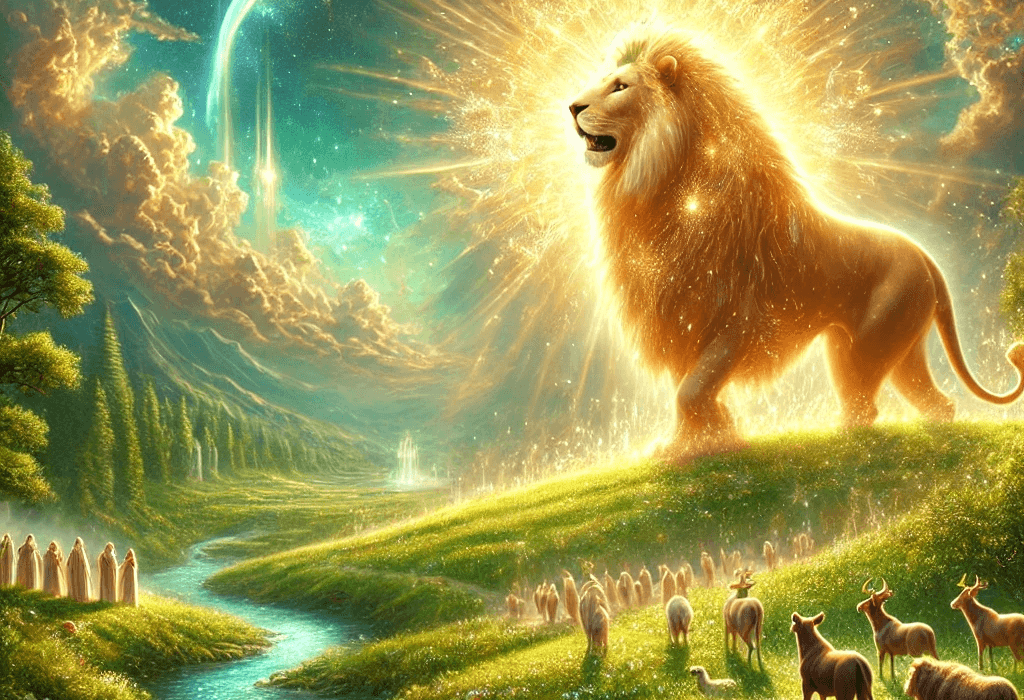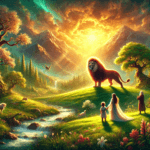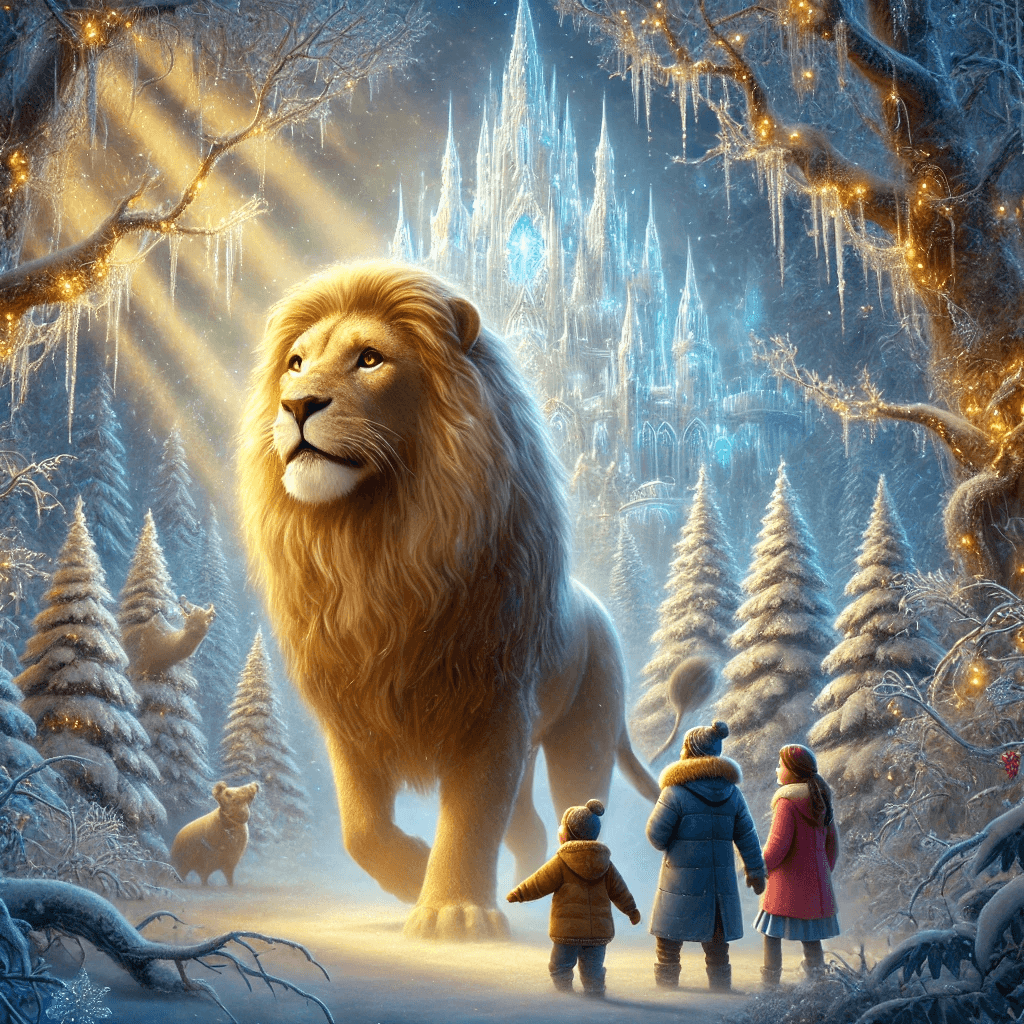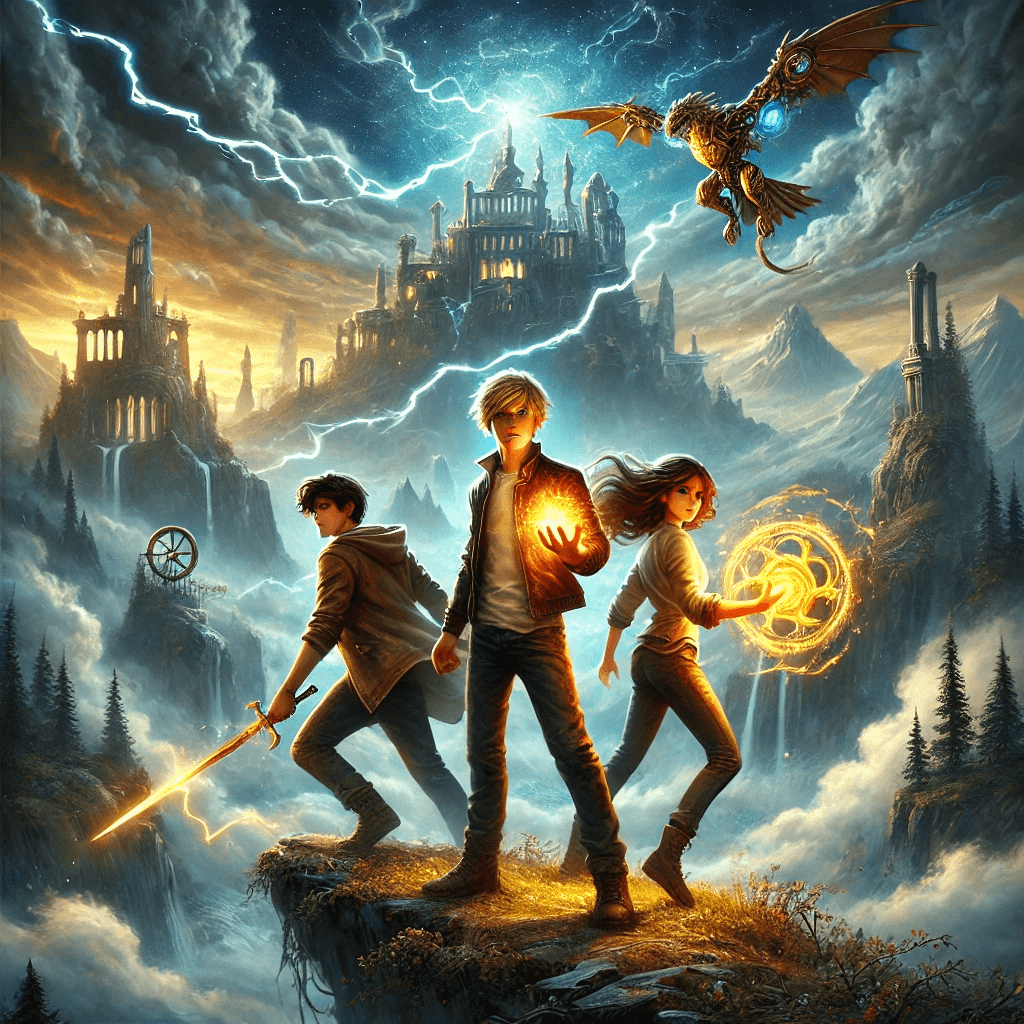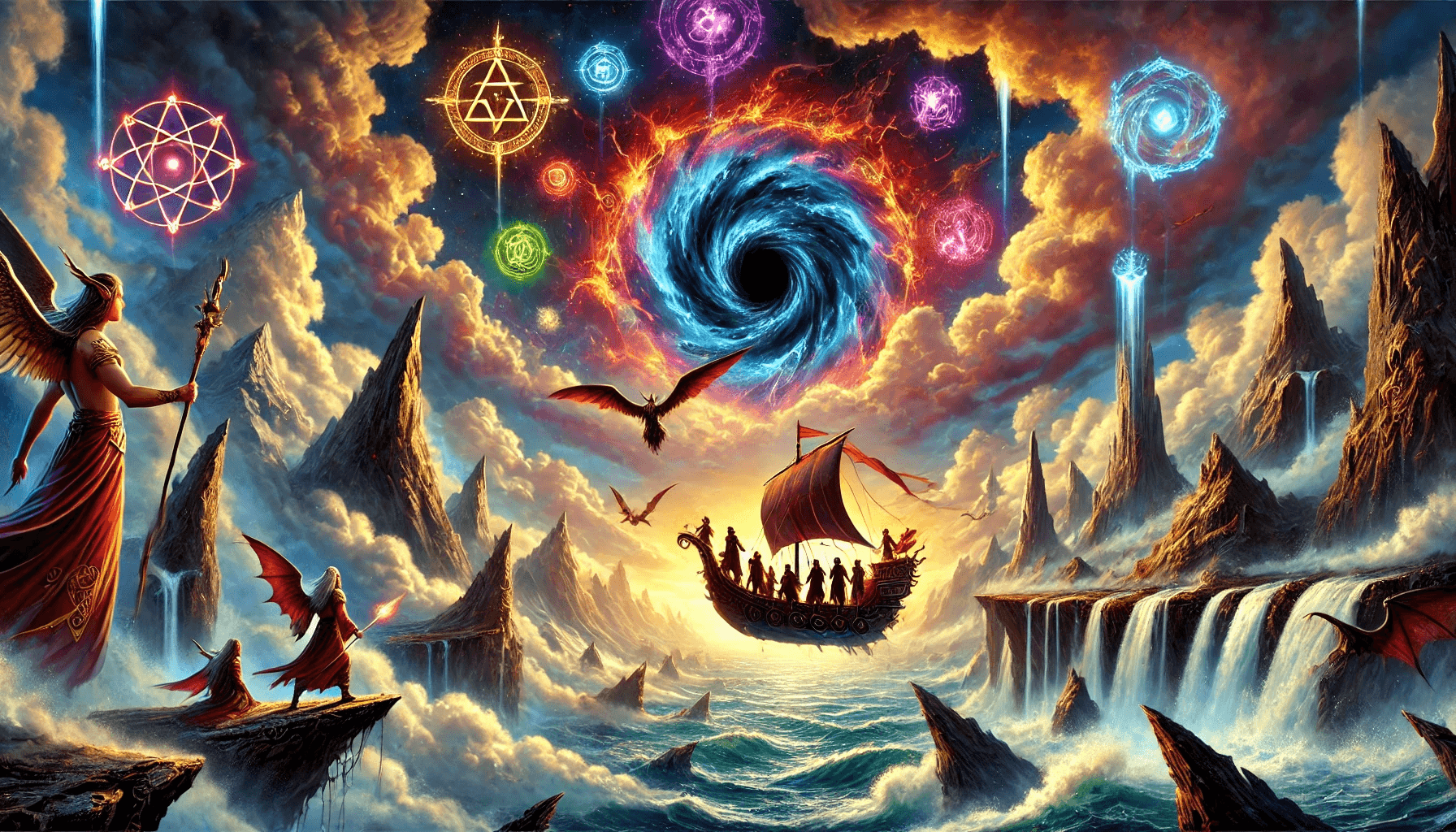The Last Battle, written by C.S. Lewis and published in 1956, is the final book in The Chronicles of Narnia both in publication order and chronological order. This allegorical tale depicts the ultimate struggle between good and evil in Narnia, blending themes of loyalty, faith, and the end of an era. With reflections on mortality and divine purpose, Lewis delivers a poignant conclusion to his beloved series.
Plot Summary
In the waning days of Narnia, far in the west beyond Lantern Waste, an old and wily ape named Shift schemes with his gullible companion, a donkey named Puzzle. Their lives take a dark turn when they find the skin of a dead lion near Caldron Pool. Shift convinces Puzzle to wear the skin, thus impersonating Aslan, the Great Lion. Deceptively claiming Aslan’s authority, Shift begins a reign of manipulation, spreading falsehoods and aligning with the Calormenes, a foreign and cruel people. The once-peaceful Narnia is thrust into confusion and despair as its inhabitants are coerced into slavery, their trust in Aslan exploited.
King Tirian, the last monarch of Narnia, learns of these troubling events while at his hunting lodge. Disturbed by reports of Aslan’s supposed commands and the felling of sacred trees in Lantern Waste, he and his loyal companion, Jewel the Unicorn, set out to investigate. Along the way, they encounter a Talking Horse enslaved by the Calormenes, and in a fit of righteous anger, Tirian and Jewel slay the oppressors. Yet their rash actions lead to a grave realization—they may have acted unjustly if Aslan truly commanded these deeds.
Wracked with doubt and guilt, Tirian surrenders himself to the Calormenes. He is taken to a makeshift court presided over by Shift, now glorified as the “mouthpiece” of Aslan. The ape, adorned in ill-fitting finery, commands the loyalty of the Narnians through fear and deceit. Aided by the Calormenes, Shift furthers his claim that Aslan and the Calormene god Tash are one and the same. This blasphemous union, Tashlan, sows deep dismay among the Narnians, who yearn for the return of the true Aslan. Tirian, bound to a tree, cries out to Aslan for deliverance.
Unbeknownst to him, his plea reaches across worlds, summoning Eustace Scrubb and Jill Pole from Earth. They arrive just in time to free Tirian and pledge their help in restoring Narnia. Together, they journey to a hidden tower where they find weapons and provisions. From this sanctuary, they plan their resistance, rallying a small band of loyal Narnians, including dwarfs and Talking Animals, who refuse to bow to the false Aslan.
Meanwhile, Shift’s treachery deepens. He reveals to the Narnians a figure draped in the lion’s skin, parading Puzzle as Aslan. The deception is imperfect, but in the dim light and amidst the pervasive fear, many are fooled. Shift enforces his rule with increasing cruelty, selling Narnians into slavery to the Calormenes and demanding tributes of food and labor. The once-vibrant land grows bleak under this oppressive regime.
Tirian and his allies stage a daring rescue, freeing some captives and disrupting the Calormenes’ plans. However, their efforts are not enough to turn the tide. A sense of doom looms as more Narnians succumb to despair or fall under Shift’s sway. The dwarfs, once stalwart allies, retreat into isolation, declaring themselves neutral and trusting no one.
As the conflict escalates, Tash, the Calormene god, is summoned to Narnia, embodying the evil unleashed by Shift’s deceit. His menacing presence confirms that the events set in motion have spiraled beyond anyone’s control. Despite the growing darkness, Tirian and his companions refuse to yield. They confront Shift and his followers at a stable, which serves as the false Aslan’s dwelling. Here, a final stand takes place.
One by one, the loyal Narnians and their foes are drawn into the stable, where a surprising truth is revealed: the stable’s interior leads to Aslan’s country, a realm of infinite beauty and peace. For the faithful, it is a passage to paradise; for the treacherous, it is a place of judgment. Shift meets his end, his greed and lies ultimately consuming him. Tash claims the Calormene leader, Rishda Tarkaan, in a moment of divine reckoning.
Aslan himself appears, majestic and awe-inspiring. With his arrival, the true nature of all is revealed. The world of Narnia begins to dissolve, its time fulfilled. The stars fall from the sky, and the land is unmade. Aslan calls the faithful into his country, where they are reunited with loved ones and past heroes of Narnia, including the Pevensie siblings, who had once ruled during Narnia’s golden age.
In Aslan’s country, the companions discover a reality greater and more profound than they had ever imagined. This new world is not the end, but the true beginning. It is the fulfillment of all they had longed for, a place where joy and truth abound eternally.
Main Characters
King Tirian: The last king of Narnia, Tirian is brave, loyal, and deeply devoted to Aslan and his kingdom. He struggles with doubt and guilt but remains steadfast in seeking justice and truth.
Jewel the Unicorn: Tirian’s closest companion, Jewel symbolizes nobility and faithfulness. His unwavering belief in Aslan and devotion to his king make him a beacon of hope amid chaos.
Shift the Ape: The story’s main antagonist, Shift, is manipulative and power-hungry. He deceives the Narnians into believing falsehoods about Aslan, causing turmoil and despair.
Puzzle the Donkey: A well-meaning but gullible character, Puzzle is coerced by Shift into impersonating Aslan. His arc reflects the dangers of blind obedience and the importance of discernment.
Eustace Scrubb and Jill Pole: Returning characters from earlier in the series, these brave children are summoned from Earth to aid Narnia in its time of greatest need. They embody courage and loyalty.
Aslan: The great lion and true ruler of Narnia, Aslan represents divine authority, justice, and love. Though his appearances are sparse, his presence looms over the story as a source of ultimate hope.
Tash: A dark deity worshiped by the Calormenes, Tash represents evil and false religion. His arrival in Narnia signifies the culmination of Shift’s treachery.
Theme
Faith and Deception: The story explores the power of faith and the devastation caused by deceit. Shift’s manipulation of Puzzle as a false Aslan challenges the Narnians’ trust and discernment.
Endings and Renewal: As the final book, it delves into the end of Narnia, mirroring apocalyptic and eschatological themes. Yet, the conclusion hints at renewal and eternal joy in Aslan’s country.
Courage and Loyalty: Characters like Tirian and Jewel demonstrate the virtues of steadfast loyalty and bravery, even in the face of despair and overwhelming odds.
Judgment and Redemption: The themes of divine judgment and personal redemption are central. Narnia’s final reckoning separates the faithful from the faithless, reflecting Lewis’s Christian allegory.
Illusion vs. Reality: The conflict between truth and illusion is highlighted through the false Aslan and Tash’s emergence. This motif underscores the importance of wisdom and moral clarity.
Writing Style and Tone
C.S. Lewis’s writing in The Last Battle is marked by its allegorical depth and evocative prose. He employs vivid imagery to bring the decaying yet beautiful world of Narnia to life, contrasting its pastoral charm with the growing corruption and despair. His descriptions of Aslan’s country are radiant and uplifting, evoking a sense of divine majesty.
The tone oscillates between somber and triumphant, reflecting the stakes of the narrative. The dialogue carries a sense of gravitas, particularly in moments of moral reflection and theological insight. Lewis masterfully blends simplicity and profundity, making the book accessible to younger readers while offering layers of meaning for adults.
We hope this summary has sparked your interest and would appreciate you following Celsius 233 on social media:
There’s a treasure trove of other fascinating book summaries waiting for you. Check out our collection of stories that inspire, thrill, and provoke thought, just like this one by checking out the Book Shelf or the Library
Remember, while our summaries capture the essence, they can never replace the full experience of reading the book. If this summary intrigued you, consider diving into the complete story – buy the book and immerse yourself in the author’s original work.
If you want to request a book summary, click here.
When Saurabh is not working/watching football/reading books/traveling, you can reach him via Twitter/X, LinkedIn, or Threads
Restart reading!


